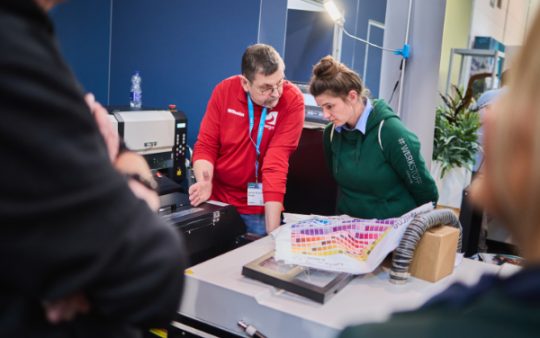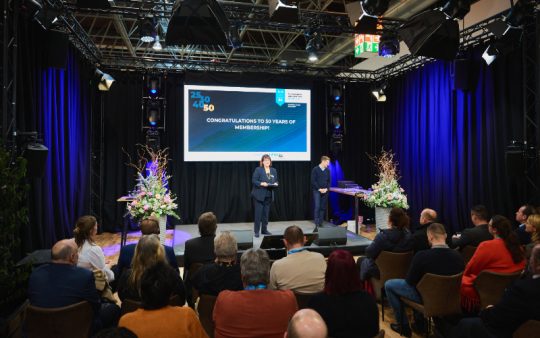Is cotton a sustainable product?
Published on 05.02.2020

In the general sustainability debate, cotton is occasionally seen in a negative light, for several reasons: when looked at quickly and superficially, it can be dismissed, even condemned, as a waste of water and a pesticide bomb. For one, that’s not exactly correct and what’s more: this naturally renewable raw material also has many good sides. That’s why it’s worth taking a closer look. The Bremen Cotton Exchange – an exhibitor at PromoTex Expo in Düsseldorf in January 2020, among other things – supported the author’s research with advice and practical help.
Approximately 250 to 300 million people worldwide earn there living growing cotton, two thirds of them in developing countries. Much has happened in recent years to improve the employees’ quality of life there. In addition to numerous advances in agriculture that happen in the course of research and development without leading to subsequent certification, it bears to mention the work of important labels such as GOTS and Cotton made in Africa, among others, which gets more and more support from international textile and apparel manufacturers. Founded in 2014, the German Partnership for Sustainable Textiles has also contributed to improving the social and ecological conditions in the global textile industry. It was founded by the German development minister, Gerd Müller, who this year took over the patronage of the Textile Campus at PromoTex Expo.
By now, intensive research and development work by many international companies and organisations has resulted in a clear drop in the use of water and pesticides. The organic cotton segment, meanwhile, remains a tiny niche, with a global share, of still less than one per cent. It’s remarkable that 60 per cent of this volume is used by members of the aforementioned German Partnership for Sustainable Textiles alone. The reasons are manifold: there’s a shortage of organically produced seeds, and the cultivation of organic cotton is indescribably labour-intensive. Yields, moreover, usually are much lower than in mainstream agriculture. At the same time, farmers switching to organic cotton barely get paid more. Purchasing guarantees are rarely granted; specialist knowledge and experience are often lacking; and certification processes are frequently tedious, difficult to understand and time-consuming. Work on all these points continues constantly.
It goes without saying that cotton, a plant of the genus Malva, requires water to thrive – just like any other plant. Cotton cultivation, however, consumes only three per cent of the water used for agricultural purposes worldwide. People have forgotten that cotton is actually a desert plant that thrives in many semi-arid regions where no other plants would grow at all – for example in areas in the French-speaking parts of West Africa. Cotton only consumes water during the initial growth phase; later, it needs nothing more than sun and dryness to mature into a crop that’s ready to be processed into high-quality fibres and fabrics. Another remarkable fact: 55 per cent of cotton cultivation can be handled with natural rainwater irrigation alone. And wherever artificial irrigation is necessary, there are, or course, continuous advancements like there in other areas. Digitalisation and high-tech are moving in, leading, for example, to the deployment of systems featuring drip irrigation and computer-controlled sensor technology to drastically reduce the demand for water. Already, we’re seeing successful projects in cotton-producing countries such as Israel, Australia, Pakistan and the US.

One enormous benefit when it comes to unburdening the world’s oceans is the biodegradability of cotton. In freshwater, 86 per cent of small cotton fibres like those generated by household or industrial laundry break down after only 30 days; even in saltwater, it’s still 67 per cent. Compare that to the degradation rate of polyester fibres at a terrifying zero per cent.
Few people know that the cotton plant is 100 per cent recyclable. Beyond their use in the textile and clothing industry, the fibres are also widely deployed in medical and hygiene products, paper, banknotes, architecture, and the furniture industry. Oil is extracted from the seeds for the cosmetics and food industries. The seed fibres are used to make cotton wool, while other waste products are turned into protein-rich animal feed, natural fertiliser, and composites for the construction and packaging industries.
In the current movement away from fast fashion and towards slow fashion – towards classics that can be used for many seasons over the course of years without loss of quality – cotton is definitely in the lead. In areas such as home textiles, towels, bed linen, and daywear and nightwear, virtually no comparable materials exist that similarly retain their shape even after countless washes, don’t pill, retain their colours, and bring just as much joy to the wearer as on the first day. That’s partly because cotton has extremely high wet strength compared to other natural fibres – a big advantage when it comes to textiles that have to be washed often. Even more interestingly, cotton doesn’t even really require that many washes in the first place – which is another thought that still needs to be reestablished in the minds of conscious consumers: regularly airing out jeans, for example, saves unnecessary washes and conserves large amounts of water, detergent and energy.
In any case, the fact that sustainable thinking and sustainable actions are permeating more and more of the textile and clothing industry should definitely be seen as a positive. The deployment of recycled synthetic fibres, the development of new materials from biodegradable materials of all kinds, the conscious use of resources and packaging, the recycling and upcycling of used clothing, all that makes sense – as does the cultivation and use of cotton.
By the way: if you’re interested in soaking up even more expertise on cotton as a raw material, consider attending the seminar “Cotton” at the Bremen Cotton Exchange on 29 April. The seminar is organised by the Academy for Textile Finishing in cooperation with the Bremen Cotton Exchange and PromoTex Expo.
More information: www.baumwollboerse.de














